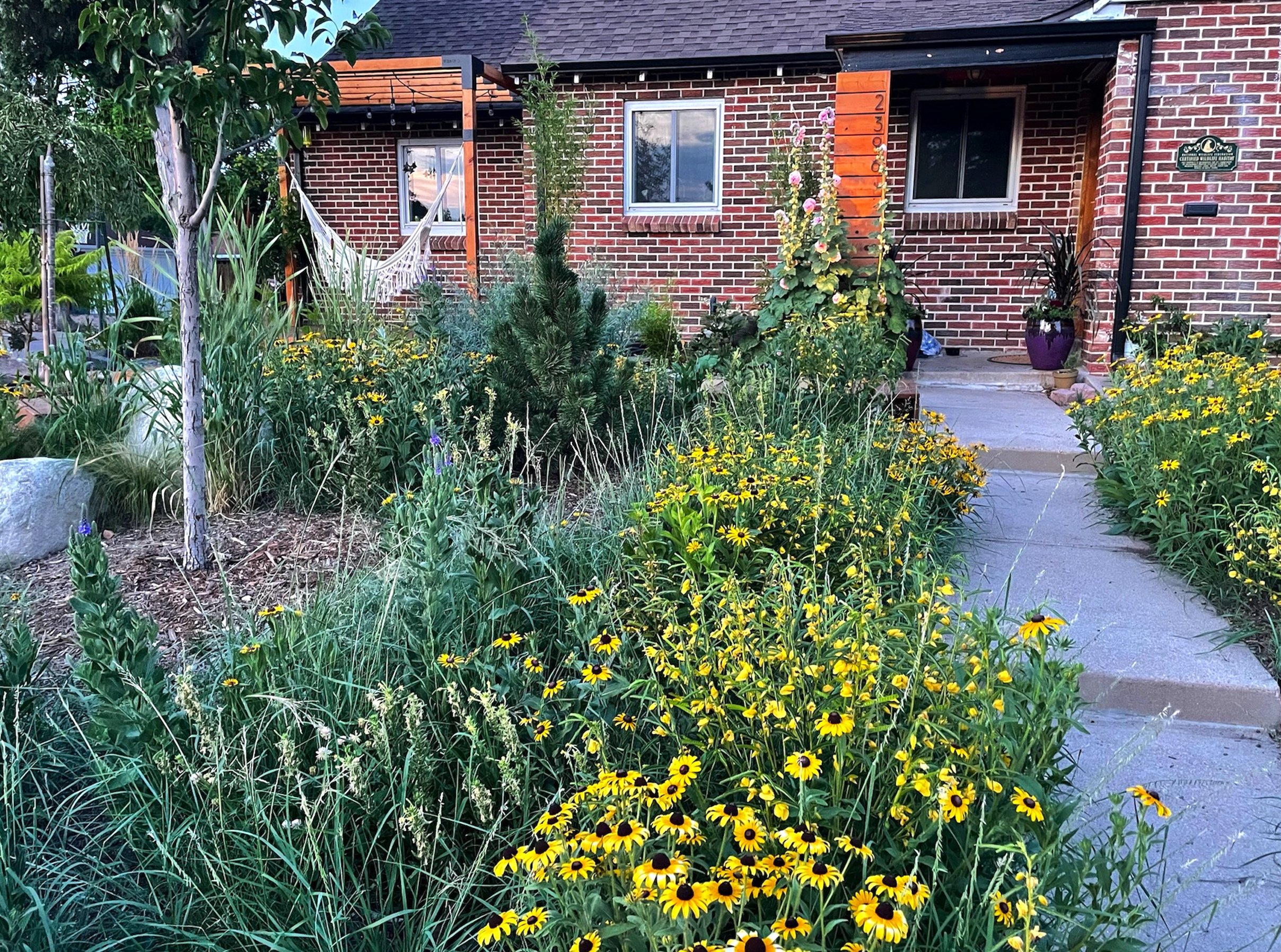
Lawns to Meadows
Are you an eco-conscious homeowner looking to reduce your carbon footprint and create a healthier environment for your family and community? If so, the answer may be quite literally at your doorstep.
Rethinking the lawn
Grass lawns first emerged in 17th century England as a mark of wealth and status. They subsequently became a powerful symbol of the middle-class American dream; yet, as our understanding of the environment around us evolves, so too should landscape design. We believe that lawn to meadow conversions are an important part of residential gardens for the present and the future.
Today, grass lawns cover over 63,000 square miles of America. These are vast expanses of ecological “dead zones” that provide virtually no habitat to pollinators and other wildlife. At a time when bird and insect species are in rapid decline, it is important to look to lawn alternatives if we wish to help support a healthy and diverse ecosystem.
Grass is the biggest irrigated crop in the country- nearly one-third of residential water use in the US is for landscape irrigation. Unlike native species, adapted to local climate conditions, lawns are artificially constructed environments with significant water needs.
While it is true that grass lawns can soak up some amount of carbon from the atmosphere, this environmental benefit is outweighed by the heavy carbon costs required to maintain them. Rather than negating climate change, grass lawns are a carbon contributor due to the extensive maintenance requirements. For example, a four stroke lawn mower operating for one hour is the equivalent to a vehicle traveling for 500 miles. Lawns also require a lot of chemicals and nearly 80 million pounds of pesticides are used on lawns each year in the US alone. Excess fertilizers and pesticides end up in local waterways through runoff, poisoning fish, harming aquatic wildlife, and polluting ecosystems.
A new approach
It is time to reimagine and redefine what a residential landscape design should look like.
A meadow (prairie, grassland) consisting of a mix of native grasses, flowering perennials, and reseeding annuals is a low-cost, low-maintenance alternative to the traditional grass lawn. It requires no fertilization, little to no supplemental water, and provides an excellent habitat for insects and wildlife. Once established, a meadow typically requires cutting only once per year. Deep rooted plants capture and sink large amounts of carbon deep into the soil more efficiently than a traditional grass lawn. A meadow provides natural beauty and year round seasonal interest.
There are some considerations to keep in mind when deciding whether a meadow is right for you. Namely, establishing a new meadow requires time, patience, and trust. New meadows can take three years to become fully established. However, watching your meadow establish is an exciting process that connects you with nature. You will discover new surprises with each changing day and season. Building a thriving community of native plants takes time at the beginning, but is well worth the wait.
When starting a meadow from scratch, the first step is to remove the existing lawn. This can be accomplished in a number of ways, and will depend on the specific site as well as customer preference and timeline. We begin the lawn to meadow conversion process with a consultation and site assessment in which we will discuss a removal plan, and planting preferences.
When establishing a new meadow, a seed mix is often the most efficient and economical option with the greatest variety of plant selection. However, for customers wanting a more immediate result, plugs can also be used in combination with seeds. We will work with each customer to develop a seed mix and planting plan that is customized to their site, preferences, timeline, and budget.
Below are photos documenting the first full year of meadow establishment.









